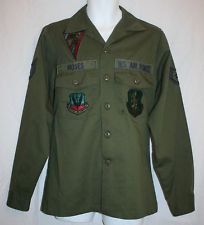I recently had the opportunity to travel to Fort Benning, Georgia to file my paperwork to start my VA retirement benefits through the “Benefits Delivery on Discharge” program.
As I was driving there, I realized that the last time I had been on Fort Benning was nearly 25 years ago to attend Army Airborne School as an ROTC cadet. Naturally, a flood of memories came washing up as I reflected on that experience of a quarter-century ago.
The fact that it has been 25 years actually surprised me. Number one because it really does seem like yesterday and number two I don’t feel all that old. But for sure I am not the same man today as I was then. I’d like to think I am a little wiser and significantly better looking.
At any rate, I thought I would tell my story and incorporate some of the lessons that have stayed with me from that experience.
The Decision to “Go Airborne”
As an ROTC cadet attending Washington University in Saint Louis on an electrical engineering scholarship, I found myself surrounded by many smart and ambitious classmates. We were all great friends, but the ROTC environment was such that if you wanted to do well, you had to get assigned to key leadership positions within the corps. This involved competition amongst your peers based on your participation in the corps, your grades, and of course how well you did in the position you were assigned.
I wanted to rise up the ranks within the corps and distinguish myself. By the time my junior year arrived, I had established a strong track record of success and was in a position to apply for a variety of summer programs, one of which was Army Airborne School.
This particular program was extremely competitive across all ROTC detachments in the country given that there were only 20 slots to be given out nationwide. So I put my name in the hat and applied to go.
At that time, I had this idea that I wanted to test my physical capabilities and get into the more specialized areas of the Air Force such as combat control. I call it my “John Wayne” phase. Also, no cadet from our detachment had completed airborne school in several years, and the last guy who tried before me broke his collarbone. I wanted to be the guy that made it.
Everyone tried to talk me out of it. They said things like, “You’re risking your scholarship,” which I was if I got injured badly and washed out. Or, “it’s physically demanding, what if you can’t hack it and quit.” Well, there was no way I was going to quit, and besides I was in phenomenal shape. Even our commander had his doubts. He was a Vietnam era pilot and kept asking me “why anyone would want to jump out of a perfectly good airplane?” I really didn’t have a good response for that one.
But none of these arguments mattered, I was determined to go.
Well, the good news came down that I was selected for the program and shortly after classes ended that year, I found myself in June of 1988 on a plane to Columbus, Georgia as a 20-year old college ROTC student with a resolve to do what it took to graduate the course.
Zero Week—Inprocessing and Orientation
After a bumpy ride from Atlanta to Columbus on a prop driven plane, I found the bus that was to take me and other airborne candidates to Fort Benning. The bus ride was uneventful, but you could tell that most of the people on the bus were apprehensive and tense—there wasn’t much talking.
Now, you have to understand that Fort Benning is a very “hooah” base. It is the home of armor school, so you could see Abrams tanks rolling to maneuvers up and down the roads. It is also the home of infantry school, Ranger school, Special Forces school, and Pathfinder school. You could literally feel the swagger of the place envelop you.
Upon arrival at the school compound, a wiry Army technical sergeant in a black hat with gleaming airborne wings climbed on and told us in an firm and direct voice to proceed in an orderly fashion off the bus and form up. He also asked for a few volunteers to unload the baggage from the bus.
This, in effect, was my first test. My Dad was drafted into the Army during Vietnam and he gave me two pieces of advice: stay out of the “gentlemen’s establishments” and don’t volunteer for anything. So I stayed quiet and waited for some poor suckers to volunteer, which to my surprise four soldiers actually did. Success! Thanks Dad. This trend of trying to avoid details was a theme for me throughout the course which I’ll talk about more as we go through this series.
The second I stepped off the bus, it seemed all hell broke loose. Out of nowhere, a horde of “black hats” (Airborne instructors) showed up at started yelling at us in very colorful language to “get you’re a**es moving Legs.” If they saw any hesitation the next words out of their mouths were, “beat your face.” In other words, start doing push-ups. Soon, half the bus was beating their faces.
As I was doing my push-ups, the first of thousands to come, I wondered why they were calling us “Legs.” I finally figured out that it was a derisive term for someone who wasn’t jump qualified—like me. In retrospect, it was a clever way of instilling a desire to be elite and set yourself apart from the pack.
Somehow, we managed to get formed up after which we were summarily marched to our barracks for in-processing with the black hats hovering over us like hungry vultures. After this initial shock treatment, we filled out some paperwork and went to equipment issue to get our helmet, web belt, and canteen. I ended up getting assigned to Charlie company and rooming with an Air Force ROTC cadet from Clemson and an Army ROTC cadet from Vanderbilt which was a good deal.
Later that afternoon, we were called out for orientation to the program. This was where we got assigned to our “sticks” of 12 students with a stick leader and our very own black hat. At the beginning of each day, the stick leader—a student appointed to the position, usually by enlisted rank seniority–was responsible for checking the appearance and physical condition of each person in the stick. Appearance, uniforms, and boots that did not measure up to standards were grounds for you and the stick leader to be assessed penalty exercises. This included the wear of jump boots, for which the black hats had a particular distaste because you hadn’t earned the right to wear them. Needless to say, being squared away was the best way to take care of yourself and your stick leader.
The first one to talk to all of us was the charlie company First Sergeant. This guy was the definition of crusty. He looked old and hunched over, but as he addressed us with his backwoods southern twang, it was evident that he had a ton of ornery left in him.
“Nah-yuh let me tee-all yew: YEW WUNT WOT WE GOT. Yew voluntee-ahd to be hee-ah, so if yew wanna be ay-ah-bone, yew betta folla our rules.”
He was really hard to understand, but I got the message.
The company commander was a Captain who had apparently been part of a rare airborne assault in Vietnam. It seems he’d been badly wounded for which he was awarded the bronze star for valor and a battlefield promotion out of the enlisted ranks to officer. The non-coms spoke of him with great respect–and rightfully so.
Another one of the black hats insisted we call him “Sergeant America” instead of the normal “Sergeant Airborne.”
Needless to say the airborne attitude was in full display with these instructors.
Of the approximately 500 students in the company, there were only two Air Force cadets: my roommate and I. Not only were we way outnumbered, we were still wearing the green “pickle suit” fatigues while everyone else was wearing the “new” woodland battle dress uniforms. That situation easily earned us an extra thousand push-ups.
We also had a group of West Point and Naval Academy cadets in the company so my Air Force buddy and I at least had some others with whom we could identify.
The real revelation was the Navy SEAL team that was there with us. They had just completed BUDS and were—to put it mildly—brimming with confidence. Given what they had just gone through, they all looked at the school as a bit of a cakewalk. The airborne school staff had to take them aside and tell them to tone it down because for most of the soldiers there, airborne school would be the most challenging thing they had done in their entire lives.
And for the record: airborne school is not exactly a cakewalk.
With that, we settled in for the night and the start of ground week the following morning.
What I Learned
1. Lesson #1: Whatever you resolve to do, do it with “determined determination.” If you set a goal for yourself, stick with it and follow-through despite self-doubts, challenges, and naysayers. Getting those jump wings was the goal, and I was determined to achieve that goal no matter the hardship. Good thing, too, the course involved plenty of uncomfortableness and even some fear and suffering.
2. Lesson #2: Understand the environment in which you find yourself. There was a specific culture, rules, and expectations at Army Airborne school. At some level, I did not know what I was getting myself into, but to succeed you had to learn quickly and adapt accordingly.
3. Lesson #3: Stand tall for who you are and what you believe in. Me and my buddy took a lot of abuse as the only Airmen in the company, but even though we were not yet commissioned officers, we withstood the assault. Without a doubt, our self-confidence, pride, and resolve were strengthened by doing so. As Churchill once said, “Never give in. Never give in. Never, never, never, never—in nothing, great or small, large or petty—never give in, except to convictions of honor and good sense. Never yield to force. Never yield to the apparently overwhelming might of the enemy.”
By Joe Scherrer | The Leadership Crucible
(The content of this post is based on personal experience and is intended to communicate general leadership lessons. It is not an official statement of the Department of the Air Force or Department of the Army)


